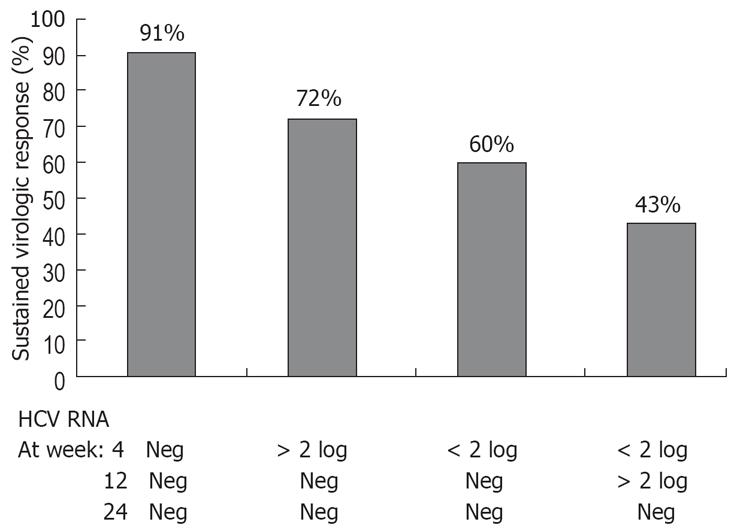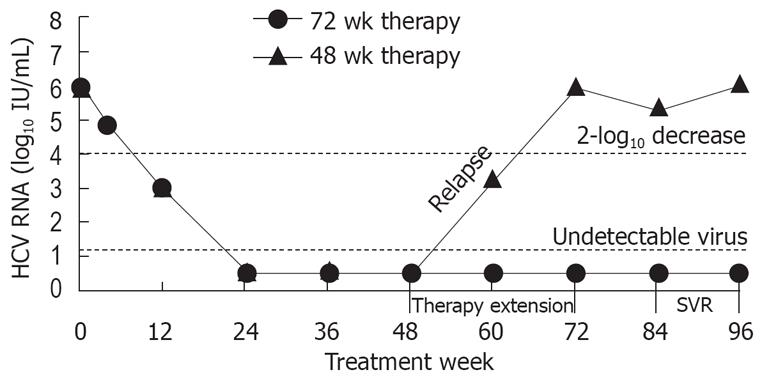Copyright
©2008 The WJG Press and Baishideng.
World J Gastroenterol. Jun 21, 2008; 14(23): 3621-3627
Published online Jun 21, 2008. doi: 10.3748/wjg.14.3621
Published online Jun 21, 2008. doi: 10.3748/wjg.14.3621
Figure 1 Relationship between hepatitis C viremia and sustained virologic response with pegylated interferon alpha-2a and ribavirin therapy[19].
The later the virus becomes undetectable on therapy, the less likely it will be ultimately cleared. Data are from retrospective analysis[19] of a registration trial for peginterferon alpha-2a plus ribavirin involving over 1000 chronic, treatment-naive hepatitis C-infected patients[8]. Neg: Undetectable RNA; > 2 log: At least a 2 log10 decrease in viral RNA compared to pre-treatment value; < 2 log: Less than a 2 log10 decrease in viral RNA compared to pre-treatment value.
Figure 2 Virologic responses of slow-responders to 48 wk vs 72 wk of therapy.
Treatment extension may improve chance of SVR by lessening the chance of relapse. Slow-responders to standard duration therapy (48 wk) may see relapse after an end-of-treatment response is achieved; those receiving extended duration therapy (72 wk) are not as apt to relapse after treatment is completed.
- Citation: Pearlman BL. Extended-therapy duration for chronic hepatitis C, genotype 1: The long and the short of it. World J Gastroenterol 2008; 14(23): 3621-3627
- URL: https://www.wjgnet.com/1007-9327/full/v14/i23/3621.htm
- DOI: https://dx.doi.org/10.3748/wjg.14.3621










